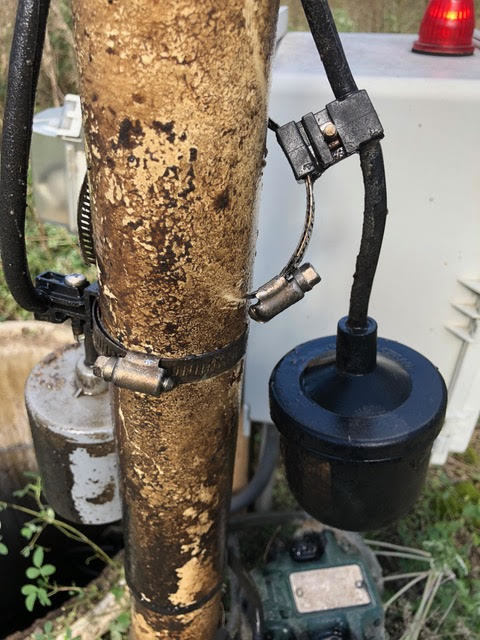
A bad connection and dirt or gravel on the pump can cause the pump to make noises it shouldn't. When a pump is operating properly, you can hardly hear it run.
Interested in Systems/ATUs?
Get Systems/ATUs articles, news and videos right in your inbox! Sign up now.
Systems/ATUs + Get AlertsWhen the pump starts but only runs for a little while or it sounds very noisy, there are several things you should check.
As always, don’t forget to use caution and turn off power at the breaker when testing components within the electrical system. If you are not 100% confident you can perform any of these tests safely, call a professional.
Below is a list of thing to consider if the pump turns on, but then stops.
- The pump motor overload tripped – Allow the pump to cool for five to 10 minutes and reconnect; if the overload trips again, take corrective action. Have an electrician or power company check and repair the branch circuit voltage.
- A motor problem such as an open motor winding, a defective thermal overload, the power cord is open or damaged, a centrifugal switch or relay is defective, or moisture affecting the pump – Remove the pump, disconnect power, connect to rated voltage and actuate the control switch. If it does not run, return or replace the pump.
- Exceptionally high voltage – Call the power company or an electrician to repair circuit.
- Exceptionally low voltage – Have the line voltage checked and compare it with the manufacturer's specifications. Call an electrician to repair the circuit.
- An impeller rubbing the inlet plate or pump housing - Disconnect power, remove the pump from the tank and observe for freedom of impeller and shaft rotation. Repair or replace the pump.
- A worn out or defective pump or motor bearings – Disconnect power, remove the pump from the tank and observe for freedom of impeller and shaft rotation, and consider replacing pump bearings.
- The water temperature is too high – Measure the water temperature, and then add cold water to the tank and test. Install a high-temperature pump or reduce the temperature of incoming water.
- Floats or weights are improperly adjusted – Add water to the tank and observe turn-on. Readjust the control floats or weights.

With a properly operating pump, you can hardly hear it run, but if something is wrong, you may hear squealing, hammering, grinding or excessive noise transmitted through the piping. If the pump does not sound right, here are some things to check:
- The impeller loose on the shaft – Disconnect power, remove the pump from the dosing tank, observe for freedom of impeller and shaft rotation, and tighten fasteners.
- An impeller rubbing the inlet plate or pump housing – Disconnect power, remove the pump from the dosing tank, observe for freedom of impeller and shaft rotation, and repair or replace the pump.
- Worn out or defective pump or motor bearings – Examine, observe and replace pump or pump bearings.
- A loose shaft coupling – Disconnect power, remove the pump from the dosing tank, and observe for freedom of impeller and shaft rotation. Tighten the coupling and setscrews.
- Obstructed rotating parts – Disconnect power, remove the pump from the dosing tank, and observe impeller and shaft rotation. Clean the impeller and remove any blockage.
- The pump is not positioned firmly on the bottom of dosing tank – Disconnect power and check the pump for stability. Readjust the discharge piping and pump.
- Gravel or stones on the bottom of the dosing tank — The tank should be cleaned. Also confirm that lids are tight to prevent stones from entering in the future.
About the author
Sara Heger, Ph.D., is an engineer, researcher and instructor in the Onsite Sewage Treatment Program in the Water Resources Center at the University of Minnesota. She presents at many local and national training events regarding the design, installation, and management of septic systems and related research. Heger is education chair of the Minnesota Onsite Wastewater Association and the National Onsite Wastewater Recycling Association, and she serves on the NSF International Committee on Wastewater Treatment Systems. Ask Heger questions about septic system maintenance and operation by sending an email to kim.peterson@colepublishing.com.
This article is part of a series on troubleshooting pumps:
- Troubleshooting Pumps: The Pump Motor Doesn’t Run
- Troubleshooting Pumps: The Pump Turns On, But There’s No Water
- Troubleshooting Pumps: The Pump Runs Continuously or Cycles Too Frequently
- Troubleshooting Pumps: The Pump Makes a Lot of Noise
- Troubleshooting Pumps: There’s a Sewer Gas Smell





